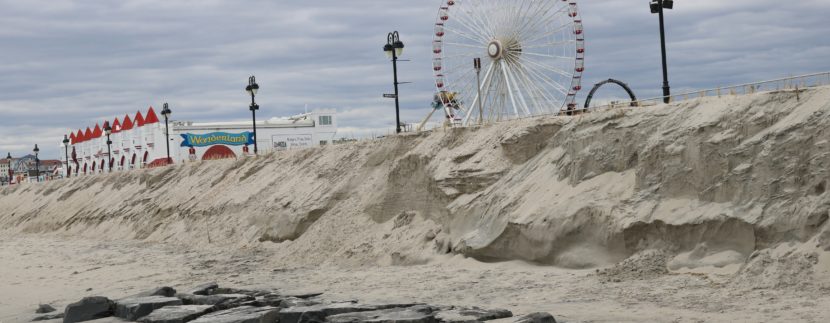Ocean City Approved for $17 Million Beach Restoration Project

By DONALD WITTKOWSKI, OCNJDAILY
Ocean City has been approved for a $17 million beach replenishment project that could begin as early as the fall of 2022, according to the federal agency that will oversee the work.
The money comes from the newly approved $1.5 trillion federal spending bill. Avalon and Stone Harbor are two other Cape May County shore towns that will benefit from the spending bill with a separate $15.5 million beach replenishment project stretching from Townsends Inlet to Cape May Inlet.
Steve Rochette, a spokesman for the U.S. Army Corps of Engineers, the federal agency that supervises beach restoration projects, said the funding is a key step leading up to the award of a contract to a private company to do the work.
“This funding allows us to move forward with developing plans and specifications and ultimately to award contracts to private industry,” Rochette said in an email.
He noted that the Army Corps does not have a firm timetable yet for when the projects will begin because it is still early in the planning process. It is possible construction could take place in the fall, winter or spring of 2022-2023, depending on the availability of dredging equipment, he said.
After an unusually harsh winter at the shore, some sections of Ocean City’s beaches and sand dunes have suffered significant erosion. For instance, the dunes along a particularly vulnerable stretch of beach at Fifth Street have been washed away by storms, leaving sharp, cliff-like drop-offs.
The $17 million beach replenishment project funded by the federal spending bill is expected to extend in the northern half of Ocean City from the Great Egg Harbor Inlet to 34th Street. The project is officially called “Great Egg Harbor Inlet to Peck Beach.” Peck’s Beach is the geographic name for the island that is home to Ocean City.
Ocean City Public Information Officer Doug Bergen said that the city is on a three-year cycle for beach replenishment as part of a 50-year agreement with the Army Corps of Engineers. He pointed out that the city is due for more beach sand next winter or spring.
“But at this time, the city has not yet received confirmation of that schedule or any further details,” Bergen said in an email.
At this point, the Army Corps does not know how much new sand will be deposited on Ocean City’s beaches as part of the “Great Egg Harbor Inlet to Peck Beach” project.
“We don’t have sand quantity estimates at this point as we are pretty early in the process,” Rochette said.
The project will help the tourist-dependent city keep its beaches in tip-top shape so it may continue attracting summer vacationers.
Besides the aesthetic value of having wide, powdery beaches, the city will also benefit from the replenishment project by having a bigger barrier of sand and dunes to protect homes, businesses, the Boardwalk and roads from the ocean’s storm surge.
Separate from the “Great Egg Harbor Inlet to Peck Beach” project, Ocean City is part of another beach replenishment project known as “Great Egg Harbor Inlet to Townsends Inlet.”
Beaches in Ocean City’s southern end, as well as Strathmere and Sea Isle City, are covered by the Great Egg Harbor Inlet to Townsends Inlet project. Federal funding for beach replenishment in those areas will have to come later, because the new spending bill does not include money for that project.
Beach replenishment projects are primarily funded by the federal government. Under the funding formula, the federal government kicks in 65 percent of the cost, while the New Jersey Department of Environmental Protection and the towns that are getting their beaches replenished subdivide the remaining 35 percent.




